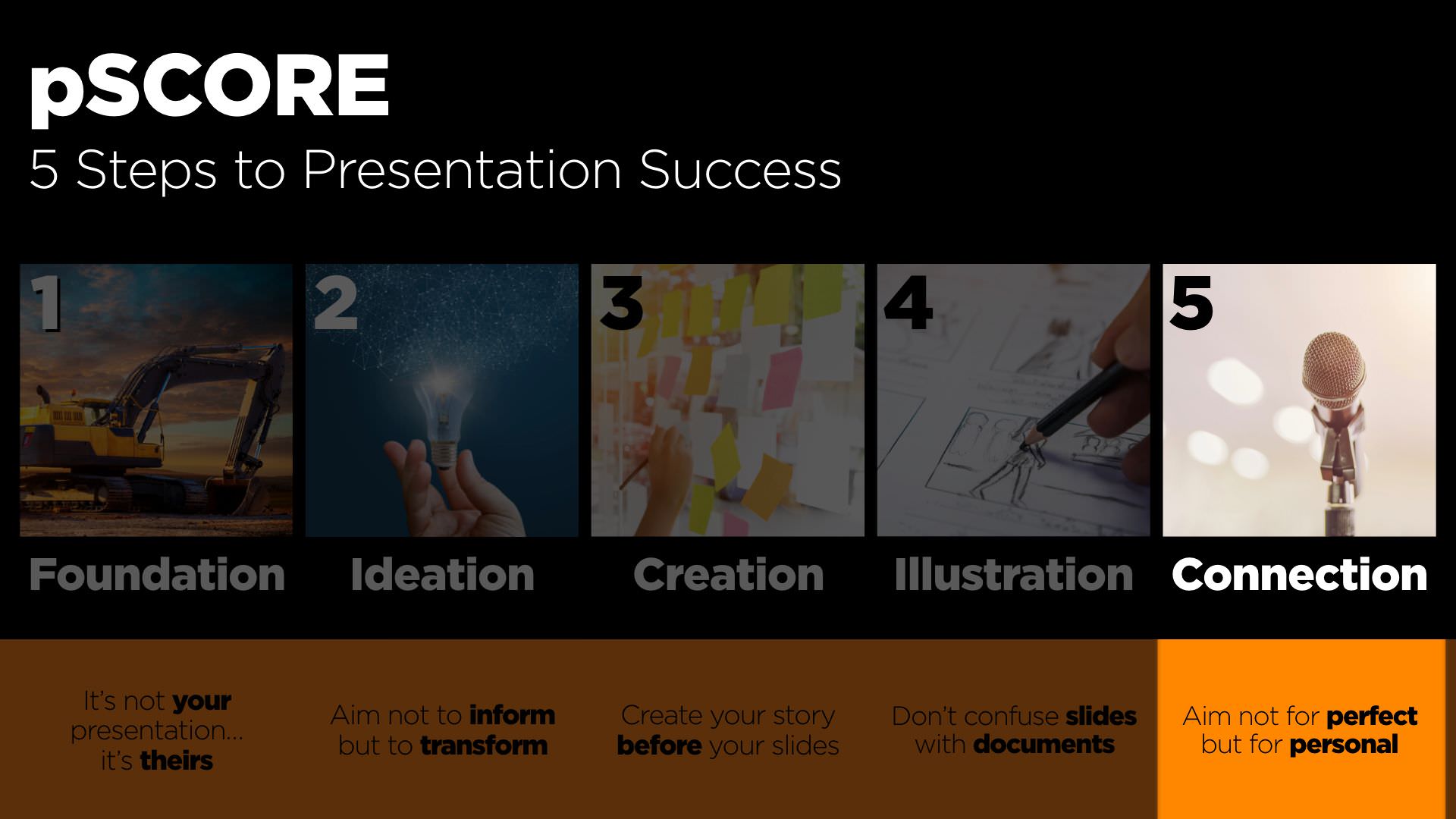Business Presentation Revolution covers the five stages of the Presentation SCORE Method, or pSCORE, giving you a simple, proven process to follow to prepare and deliver successful presentations every time.
In this extract from Business Presentation Revolution, author Phil Waknell outlines the fifth and final stage: Connection.
Having the fastest, best designed and most attractive car doesn’t guarantee you’ll win the race. The performance of the driver is just as important.
Likewise, when presenting, a poor performance can make great material fall flat, but a strong presenter can make average material shine.
In the Connection stage, we prepare mentally and physically to ensure we are ready to make a personal connection with our audience, communicate with them, and transform them.

No business audience enjoys a monologue or a speaker who appears to be talking to themselves. Remember: it’s not your presentation – it’s theirs. Since communication is more about what they receive than what you send, it’s vital to build a connection with them so they are part of your presentation and paying full attention.
This means you need to pay attention to your audience and how they are reacting to your messages – and adapt your presentation accordingly. Aim to interact with your audience as much as possible and to bring them into the presentation. The more you can connect on a personal, human level with your audience, the more likely they will be to overlook your imperfections and want you to succeed – and the more attentively they will listen.
Remember your transformational objectives. What do you need your audience to do, feel and believe? Your objective is not to deliver your presentation exactly as planned: it is to transform your audience.
Here is a brief summary of the key points of this all-important final stage:
Good speakers SCORE when speaking:
- Simple: use short sentences and plain language, with regular pauses
- Clear: make sure they can hear and understand every syllable
- Original: find your own style, accept it and hone it
- Related: create a connection through interaction, eye contact and gestures
- Enjoyable: prepare well so you appear comfortable, show your passion, and vary your tone and rhythm
As the big day approaches, focus on the 3 S’s:
- Serenity: rehearse your presentation several times, focusing especially on the introduction and conclusion, and prepare a cue-card
- Space: get to know the place or platform where you will be presenting
- Support: connect with the technical people and brief them, so they know what you need and can help you succeed.
On the big day, arrive early, try to greet some audience members before you begin, avoid coffee, prepare yourself physically, and manage your time well.
After the presentation, deliver your handouts, ask for feedback, and note what you could do differently next time.
Above all, treat every presentation you give as an opportunity to practice and improve. Nobody was born a great presenter. If you’re amazed at how professional the speakers appear at TED or WikiStage or some major online product launches, and feel you aren’t yet at the same level, just remember that those presenters had to work hard to become that good, and they usually have presentation specialists to help them.
I have never yet met anyone who did not have the potential to become a strong speaker. With time, effort and perhaps some speaker coaching, you can become the kind of presenter people look forward to listening to.
To learn more about this and the other stages of the Presentation SCORE Method, or pSCORE, get your paperback copy of Business Presentation Revolution from Amazon or any good bookseller. Also available as an e-book from Amazon.